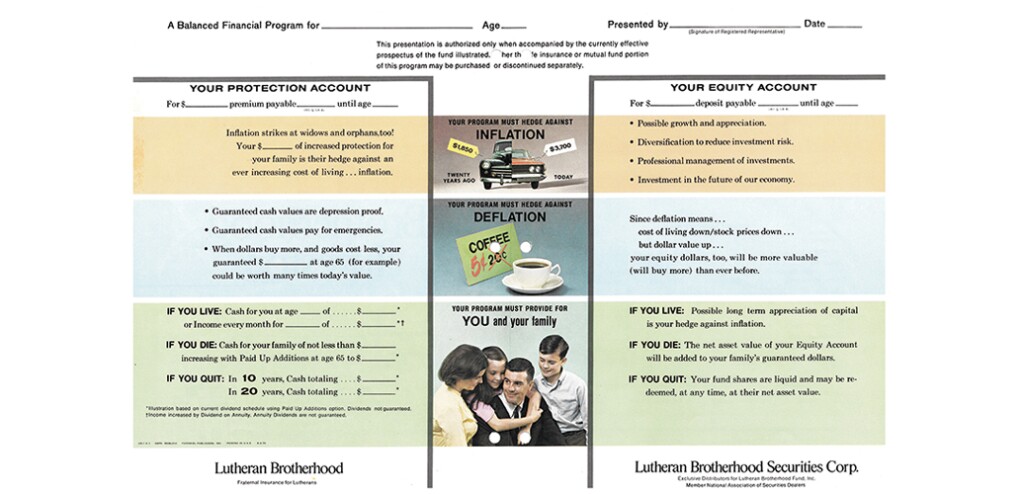Diversification is essential to balance risk and performance in your portfolio. But with so many options, it can be hard to know which products best fit your long-term goals. If you're looking to vary your investments but you're not sure where to start, you may want to consider an asset allocation fund. This type of investment fund offers diversified investment options, typically composed of stocks and bonds of different types, regions and styles, all combined in a single fund.
Learn how asset allocation funds work and how they can contribute to a balanced portfolio that reflects your values.
What are asset allocation funds?
An asset allocation fund is a type of investment that gives you a mix of assets—like stocks, bonds and cash—managed by a professional. This built-in diversification helps balance risk and returns. Some of these funds also spread investments across different countries, adding an extra level of diversity to your portfolio.
Asset allocation funds can be offered as
Definition and purpose of asset allocation funds
There's something to the saying "don't put all your eggs in one basket." Investing your money brings risk, and putting all of your money into a small number of similar investments especially can be precarious.
For example, some balanced funds invest in a mix of
How asset allocation funds differ from DIY asset allocation
Although you can make your own decisions about allocation of funds and
Finding the right balance for your risk tolerance also can take more time than many investors want to put in. But with an asset allocation fund, a professional fund manager will select investments that align with your risk tolerance, giving you confidence in a diversified portfolio that fits your needs.
How do asset allocation funds work?
Asset allocation funds are managed by professional fund managers who construct a diversified portfolio using their in-depth knowledge and market trend expertise. If you want to invest in an asset allocation fund, you generally choose the fund that is most suitable for your investment strategy, taking into account the fund's holdings and potential investment risk.
Role of fund managers
Professional fund managers construct a portfolio of investments that align with the fund's overall objectives, such as generating income or seeking aggressive capital growth. The fund manager continually adjusts the fund's holdings in response to market and economic trends in order to maintain the fund's target allocation throughout market fluctuations.
Automatic rebalancing
Often, asset allocation funds have a stated asset allocation target, such as 60% of the fund's assets will be invested in equities. Fund managers regularly
Types of asset allocation funds
Several types of asset allocation funds are available. Each offers different features that can appeal to investors across a variety of life circumstances. Whether you're just starting out investing, balancing a number of saving goals for a young family or nearing retirement, there's likely an asset allocation fund that can meet your needs. Two popular types of asset allocation funds are target-date funds for retirement savings and balanced funds.
Target date funds
Your investments are a keystone of your
Balanced funds
Are you seeking growth, but want protection against wild swings in your account balance? Balanced funds typically hold a set allocation of stocks and bonds, such as 70% stocks and 30% bonds. They can be a good choice for investors seeking an investment mix that brings opportunity for growth (from the stocks) along with income and stability from bond and income investments.
Growth funds
If you're aiming to grow your money and don't mind market ups and downs, growth funds—also called equity funds—could fit your needs. These funds focus on boosting your investment by picking stocks that can rise in value over time. Growth funds typically hold stocks of companies that are expanding rapidly and allocating additional funds to future growth opportunities, rather than paying dividends to investors. Because investors in these funds must be able to withstand fluctuations in the share price, these funds are best suited for investors who are willing to take on greater risk for potential growth.
Income funds
Income funds are designed to give investors steady earnings. They do this by investing in things like government and company bonds, preferred stocks and short-term savings accounts—all of which pay regular interest or dividends. They are more stable than growth funds but generally provide lower total returns over time. Income funds can be a good fit for retirees or other investors who need to cover regular expenses through their investments.
Benefits of asset allocation funds
Investing in asset allocation funds can offer investors several benefits. They can serve as a core position for many investors, as they provide diversification and a means to manage risk.
Diversification
Putting all your money into one or just a few investments leaves you vulnerable to major losses if those assets decline in value. Investing in one or several asset allocation funds can help you
Convenience
Choosing and rebalancing your own portfolio can be time-intensive. Investing in an asset allocation fund can help you diversify your portfolio in a short amount of time. The regular rebalancing offered through the funds can help ensure your portfolio remains aligned with your investment goals and risk tolerance, with minimal effort on your part.
Professional management
Through an asset allocation fund, you gain access to professional fund managers, who keep a close eye on the market and make daily changes to the fund's underlying portfolio to help stay consistent with the fund's objectives. Knowing your money is being professionally managed can help you avoid reacting emotionally and selling investments during periods of
Choosing the right asset allocation fund for your risk tolerance
Choosing the right asset allocation fund depends on your goals, life circumstances and risk tolerance. If you're unsure of your risk tolerance, take our
Aggressive vs. conservative asset allocation fund options
The more aggressive the asset allocation fund, the higher percentage of stock funds or similar higher-risk investments is held in the portfolio. Conservative funds typically feature a higher percentage of bonds, which are considered lower-risk investments. Regardless of the level of risk, allocation funds will stay true to their design. An aggressive fund will stick with the strategy of investing in high-growth companies (and a conservative fund will do the latter), so investors know what they're getting.
Adjusting your risk tolerance over time
Your appetite for investment risk is likely to shift gradually from aggressive to conservative over time. You can ensure your investments adapt to your needs automatically by investing in a target date fund. Or, you can adjust your holdings from a mix of equity asset allocation funds to fixed income options to manually reduce your market risk exposure.
Thrivent's asset allocation fund options
Since 2005, Thrivent's asset allocation funds have supported clients in building financial security rooted in their values and long-term goals. Backed by experienced portfolio managers and a strategy that adapts to shifting markets, these funds offer a thoughtful, proven way to pursue what matters most—whether it's preparing for retirement, protecting your family's future or growing wealth with purpose. It's a commitment to stewardship, not just performance.
Exploring asset allocation funds offered by Thrivent
Thrivent's asset allocation funds are focused on the long-term growth of your money. Explore each fund and its performance to learn more about how
How to get started on your long-term investment goals
Before choosing an asset allocation fund or any other investment type, it's important to determine your investment goals and how much money it will take to get you there. Know that the earlier you
Using asset allocation funds to reach your investment aims
Building a diversified portfolio that's aligned with your investment goals can be difficult and time-consuming. Investing in asset allocation funds can be a simpler way to achieve your goals in a manner that aligns with your risk tolerance. Various funds are available for different life goals and risk tolerances. A







